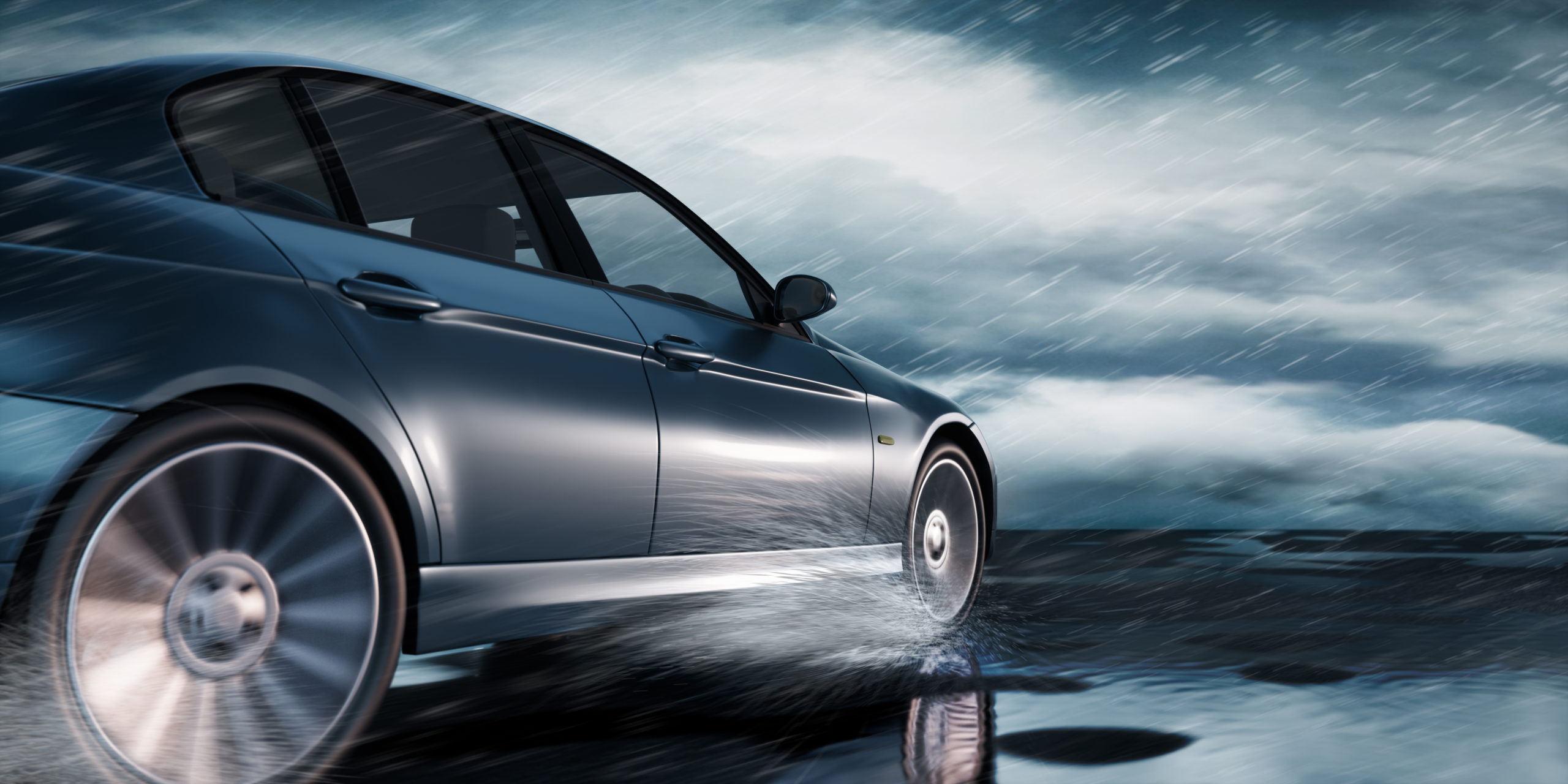
18 Nov Driving in the Rain – 7 Tips to Keep You Safe!
The rain has finally arrived in Northern California, which means our roadways will be slippery and slick! The U.S. Department of Transportation reports that more than 20 percent of accidents in the U.S. are caused by poor weather conditions.
Additionally, over 400,000 people, on average, are injured in weather-related crashes each year. Specific weather conditions require specific responses. Of all inclement weather situations, you are most likely to find yourself caught driving in rain.
Here are seven safety tips to help keep you and your passengers safe while driving on slick roadways:
- Think! Driving can be a subconscious habit. Often, when it rains, we do not adjust our thinking for the inclement driving conditions. When conditions are less than ideal, stay alert and focused on what is going on around you.
- Turn on those headlights. It is the law in all states to turn on headlights when visibility is low, and many states also require having the headlights on when the windshield wipers are in use. Well-working wipers and relatively new tires are must-haves when driving in rain, especially when driving at high speeds on the highway.
- Slow down. Speed limit signs are designed for ideal conditions. That is hardly the environment you are driving in when it is raining. So, slow down and allow more time to get to your destination.
- Maintain a safe distance between cars. We know that keeping a greater distance between your vehicle and the car in front of you in a simple safety tip. However, stopping your vehicle will be more difficult when driving in the rain. Maintain a distance of several car lengths between your car and other vehicles.
- Be extra cautious with merging lanes. Use your defensive driving skills and take precautions when passing vehicles to prevent merging collisions.
- Turn off cruise control. This feature works great in dry conditions, but when used in wet conditions, there is an increased chance of losing control of your vehicle. On rainy surfaces, cruise control may actually cause you to lose control. You might think it will help you stay at one steady speed, but if you hydroplane while you’re in cruise control, your car will actually go faster.
- Beware of hydroplaning. Hydroplaning is the technical term for what occurs when your tires lose traction with the road due to excess water on top of the road. The result is that your vehicle begins to slide uncontrollably. It is easy to hydroplane – all you need is one-twelfth of an inch of rain on the road and a speed of more than 35 miles per hours. You are more likely to hydroplane if your tires have extensive wear and tear. Should you start to hydroplane, let off the gas pedal slowly, and steer straight until you regain control. If your car starts to spin, turn your wheel in the direction that the vehicle is spinning, slowly. Do not turn your wheel against the direction it has begun to spin. Also, do not turn the wheel sharply in one direction or the other, as you could flip your car due to over correction.









